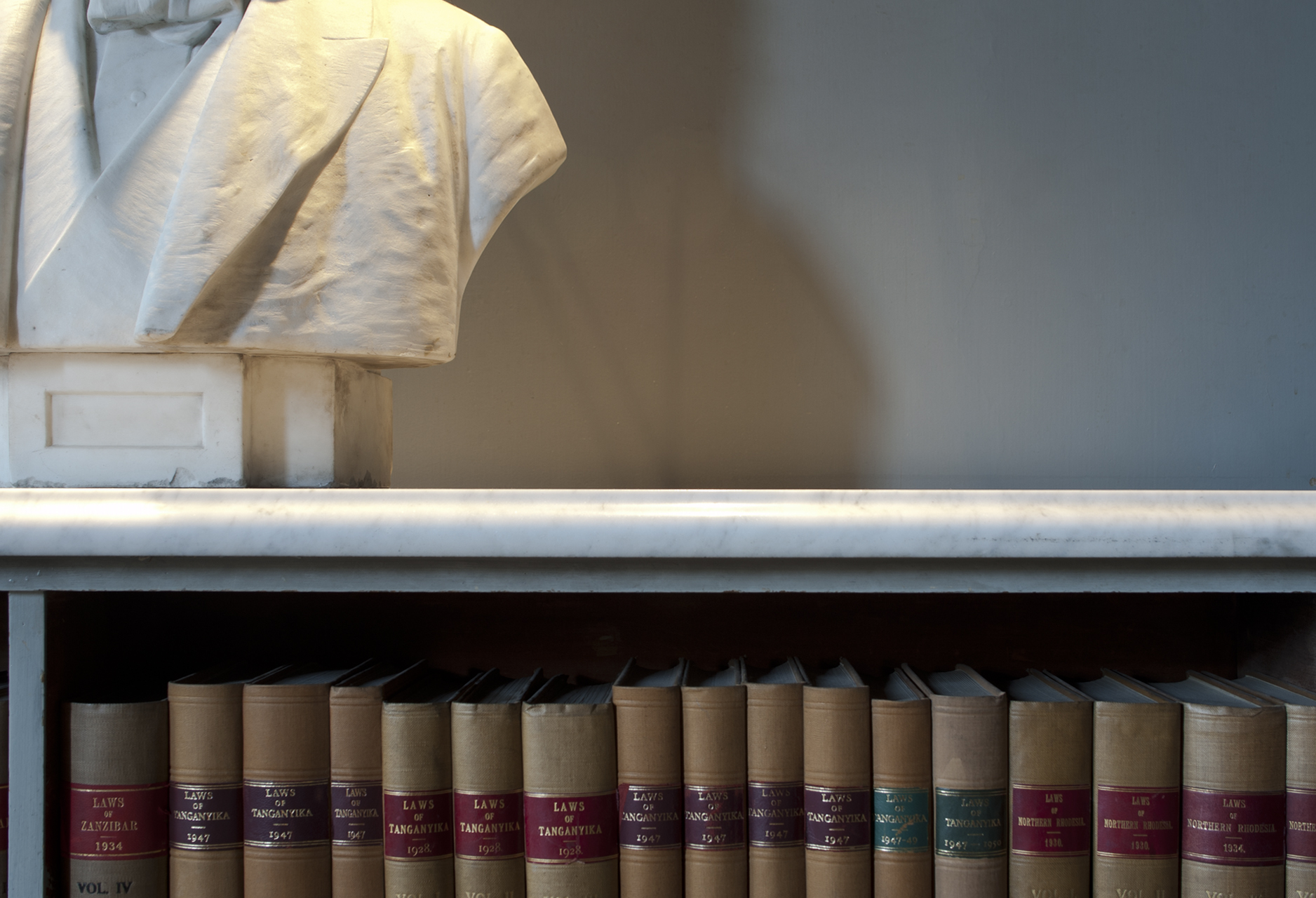Introduction : Indices: stories: unidentifIed seals
The lives – and seals – of some of the most extraordinary figures of late Enlightenment Scotland.
1: James Ogilvy, 7th Earl of Findlater and 4th Earl of Seafield (1750 – 1811)

Born on 10th April 1750 at Huntingtower Castle near Perth, son of James Ogilvy, 6th Earl of Findlater and Lady Mary Murray, James Ogilvy grew up at Cullen House, in Banffshire. He studied at Oxford, where he was noted for his classical scholarship. He inherited the family estate in 1770 after his father took his own life.
James had a lifelong passion for landscape architecture, and inspired by the French Picturesque style, he made substantial improvements to the estates. As well as redesigning the gardens, he employed architects such as Adam and Playfair to design additions to the house.
He married Christina Teresa Josepha Murray, daughter of Sir Joseph Murray of Melgund, 3rd Bt., in 1779 but they separated two years later when James left to live in Germany and the Czech Republic. James was homosexual, and had lived with a male partner while still in Scotland. He is described as being unofficially banished to Europe, but was also drawn to the more tolerant society to be found in Europe. He settled in Carlsbad where he used the £40.000 per annum income from his Scottish estates to make improvements and beautifications to the town and its surroundings, and making substantial donations to local social institutions.
James completed various landscaping projects after moving to Carlsbad but his real focus was the vineyards at Loschwitz. Together with his partner Johann Georg Fischer, he bought five vineyards overlooking the Elbe River and planned a palatial residence there. Sadly he died before it was completed.
He left Findlater’s Temple in Carlsbad, a classically styled pavilion reached via a trail, designed for visitors taking the local spa waters, as a token of his appreciation.
2: John Glassford of Douglaston (1750 – 1811)
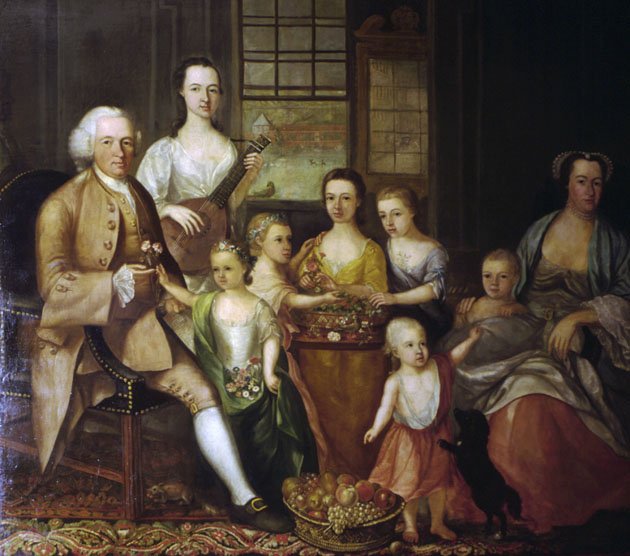
Born in Paisley in 1715, John initially followed his father James into the textile business, before putting the majority of his interests into tobacco from 1750. Trading with New England, he built up a fleet of twenty five ships with 21 stores in Virginia and Maryland. It is estimated that in 1774 he earned £1.5 million (£300 million today), a fortune based upon the exploitation of enslaved people. He also had banking interests, helping establish the Glasgow Arms Bank by 1750 and the Thistle Bank in 1761.
John was married three times, first to Ann Coates in 1743, then to Ann Nisbet in 1752, and third, to Margaret Mackenzie on 24 November 1768.
In 1760 he bought Shawfield Mansion, and the following year acquired the Douglaston Estate from the Grahame family.
3: The Rt. Hon. Admiral Lord Viscount Keith K.B (1746-1823)
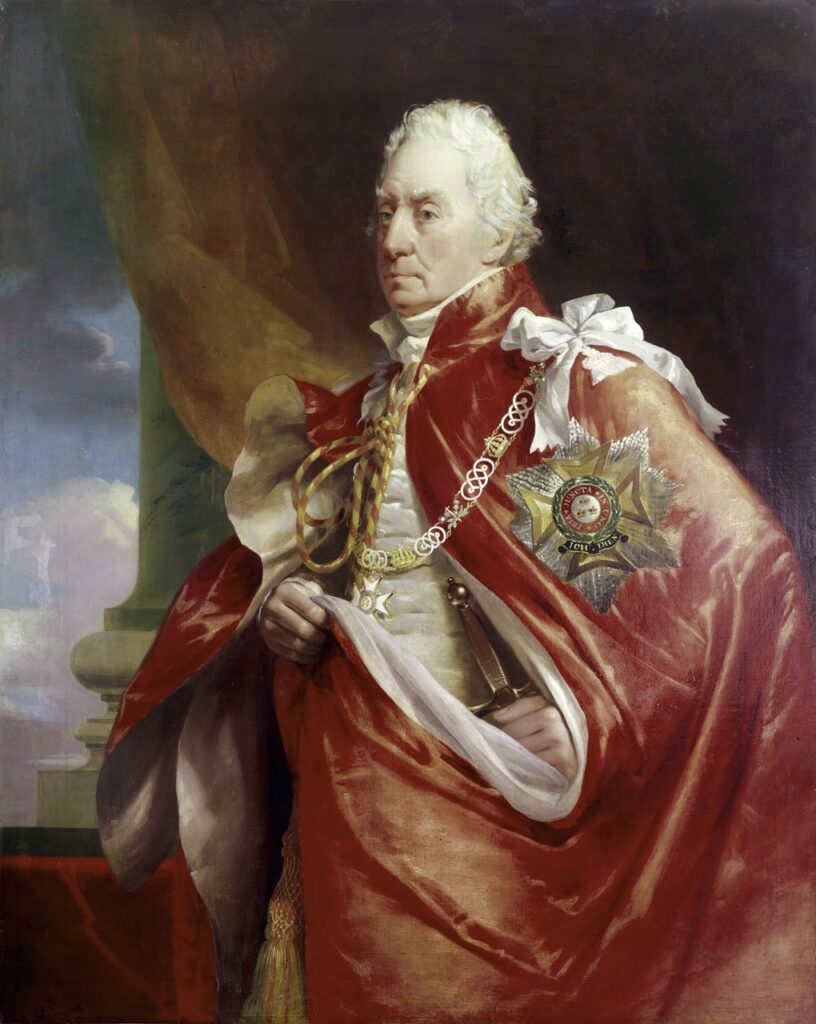
George Keith Elphinstone was born at Elphinstone Tower 7th January 1746 to Charles, 10th Lord Elphinstone and Lady Clementina Fleming.
After joining the Navy in 1761, he joined the East India Company in 1767, being promoted to Lieutenant by 1770. During his time spent ashore from 1783, he was M.P. for Dunbartonshire. During the Napoleonic Wars, he advanced through the ranks, being invested with the Order of the Bath in May 1794, and 12 April becoming rear-admiral. He was made full Admiral on 1st January 1801, and on 5th December of the same year he was created a baron of the united kingdom for his part at the landing of Aboukir. He became Viscount Keith in May 1814 at theconclusion of the War.
Keith married Jane Mercer in 1787, having one daughter, Margaret, and retired in 1814 to his house at Tulliallan Castle, Fifeshire, where he died on 10 March 1823
4: Sir John Sinclair of Ulbster, 1st baronet (1754-1835)
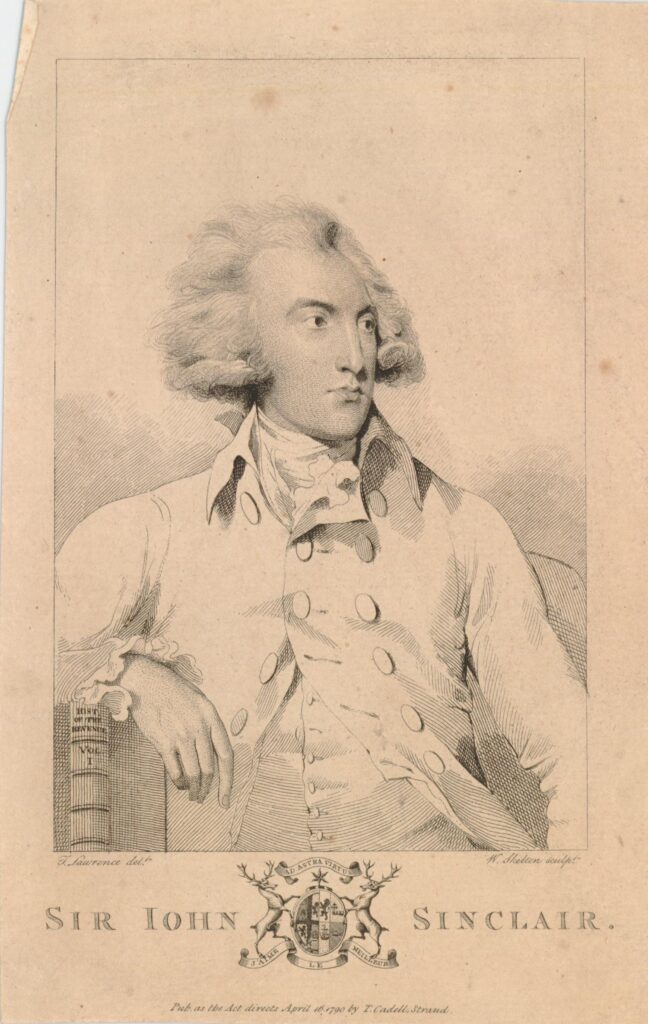
Born at Thurso Castle in 1754 to George Sinclair, of Ulbster and Lady Janet Sutherland. He studied at The University of Glasgow where he was a pupil of Adam Smith, before becoming a member of the Faculty of Advocates, and was afterwards called to the English bar. Most of his career was spent in politics, being elected member of parliament for the county of Caithness, Lostwithiel and Petersfield between 1780 and 1807.
Sinclair was not an orator and preferred to express himself in writing and publishing. He took an active part in addressing the issues of the day, most notably in 1782. One of the worst famines in memory hit Scotland due to a late summer, starvation among the poorer population reached a critical level. Sinclair successfully negotiated a grant to provide emergency food and other supplies to those in greatest need.
He also wrote on the subjects of national defence, finance, and political economy, but on returning from a lengthy tour of Europe, during which he met many heads of state, his philanthropic interests were entirely focused on societal and agricultural improvement. He had studied German state surveys (from which the word ‘statistics’ is derived), and become inspired with the possibility of measuring and improving the happiness of the population.
By collecting information relating to the economic and social activities and the natural resources of Scotland by means of questionnaires sent to each parish, Sinclair hoped to build an account of ‘the quantum of happiness’ of the communities of Scotland and also be a ‘means of future improvement’.
Sinclair published his pioneering Statistical Account of Scotland between 1791 and 1799 to great acclaim, with two further Accounts being produced in 1832 and 1951. There is also a Fourth Statistical Account of East Lothian. Sinclair’s work represents one of the finest contemporary records of life in Scotland – and indeed of any country – in the late eighteenth century.
5: John Fane, 10th Earl of Westmorland (1759-1841)
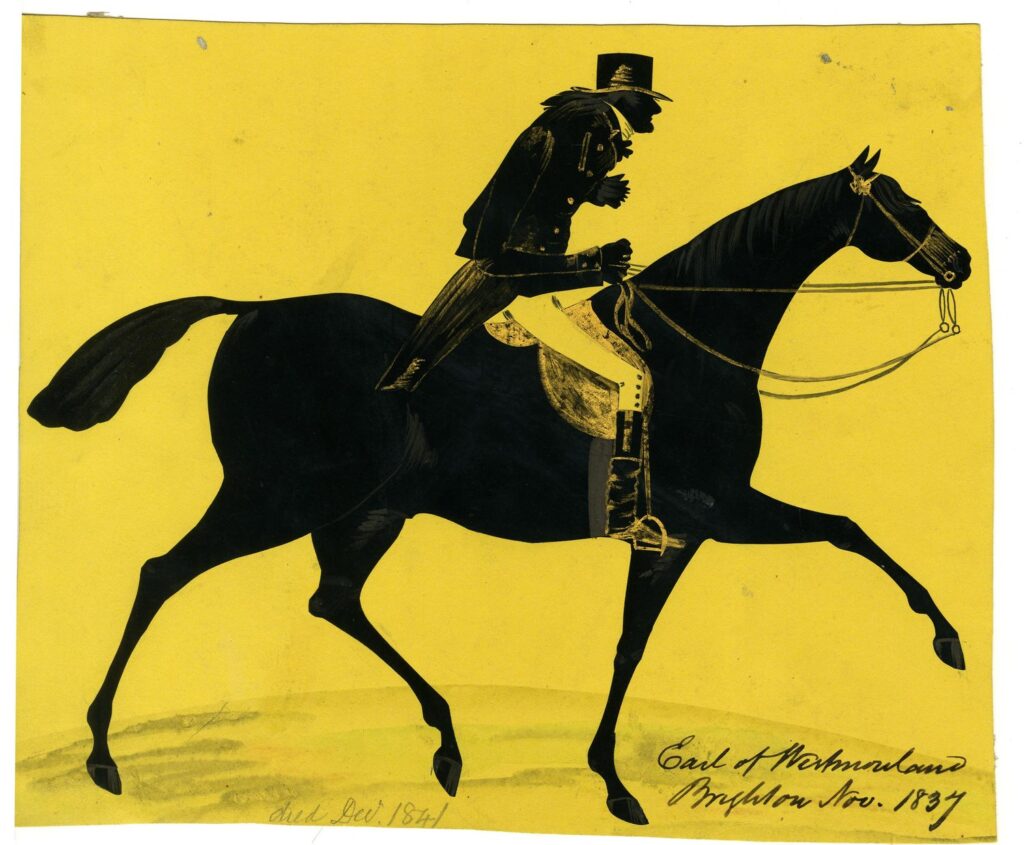
Born in 1759 to John Fane, 9th Earl of Westmorland and Augusta Bertie. He married Sarah Anne Child in 1782 and Jane Huck-Saunders in 1800.
After succeeding to the Earldom on the death of his father, Fane persued a lifelong career as a Tory politician. Becoming Lord Privy Seal in 1798. He held this position for 35 years under five Prime Ministers.
The Lord Privy Seal (Lord Keeper of the Privy Seal) was the minister responsible for authorising the use of the Privy Seal (the monarch’s ‘personal’ seal). Originally, all Royal communications would be authenticated using the Great Seal, with the Monarch having a personal seal. By the C13 control of the Privy Seal no longer resided solely with the Monarch, and the Signet became Monarch’s private seal.
By 1798 the office was that of a cabinet minister with very few duties relating to the Privy Seal and after the Great Seal Act of 1884, the Privy Seal was no longer necessary.
6: Lady Augusta (Campbell) Clavering (1760-1831)
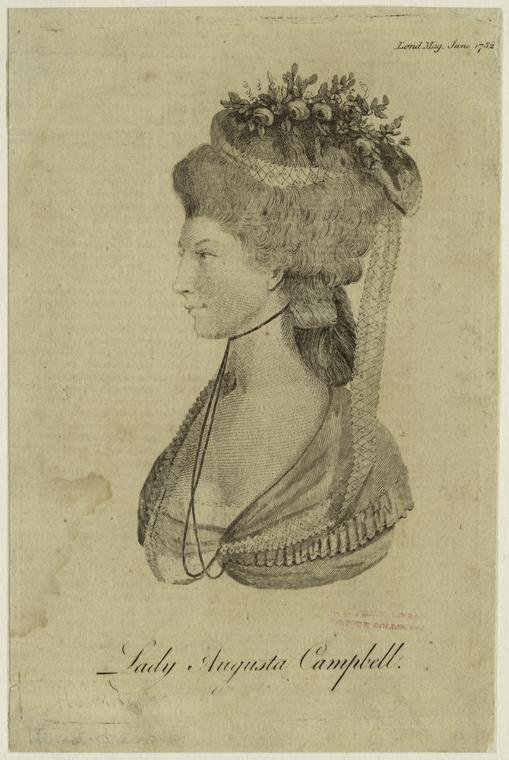
Born on March 31st 1760, to the 5th Duke of Argyll and Elizabeth Gunning , Lady Augusta grew up at Inveraray and Rosneath Castles, before travelling to London, where she was presented at Court before joining society. After rejecting a succession of suitors, including a prince, Augusta eloped with and married Colonel Henry Mordaunt Clavering.
Henry was a notorious gambler and it is said that her father never forgave her. Augusta and Henry had four children but the couple separated soon after. Elizabeth Grant of Rothiemurchus noted in ‘Memoirs of a Highland Lady’ – “Lady Augusta Clavering, once Campbell . . . who ran off from a masquerade with a lover who made her bitterly repent she ever took him for a husband.”
Augusta settled near her family later in life, with a small house in Helensburgh and a house on Queen Street in Edinburgh.
7: St Mungo’s City – the City of Glasgow

Arms of Glasgow ‘Let Glasgow Flourish’
This is the official seal of Glasgow, used on all Council documents by the Town Clerks. The image is that of the Arms of Glasgow which feature symbols relating to the life of St Mungo, patron saint of Glasgow. The tree, bird, fish and bell first appeared together on the official coat of arms in 1488 and the design of this seal most likely dates from 1789 when a new engraving was made, the old version was deemed ‘very imperfectly cut’. The motto ‘Let Glasgow Flourish’ is a shortening of St Mungo’s prayer – ‘Lord let Glasgow flourish through the preaching of thy word and praising thy name’.
8: “Floating Bob”: Sir Robert Preston of Valleyfield (1740-1834)

Robert Preston (1740-1834) was born in Scotland, the fifth son of Sir George Preston of Valleyfield and his wife Anne at Valleyfield, Fife.
He joined the East India Company in 1758, being promoted to Commander of the Company by 1768. After returning to London in 1777, he went into business with Charles Foulis managing ships for the EEC before taking over the management of several ships personally. Robert went on to become an insurance broker, prospering financially, and was made Deputy Master of Trinity House (the authority overseeing lighthouses in England, Wales, the Channel Islands, and Gibraltar) in 1795.
Well connected in the political and artistic circles, he was friends with William Pitt, Henry Dundas, James Boswell, Alexander Nasmyth, J. M. W. Turner, and Sir Walter Scott.
During his political career, he won one of two seats in the parliamentary constituency of Dover in 1784, retiring in 1804.
Robert succeeded to the Valleyfield Baronetcy in 1800, at which point he sold his house in Downing Street and returned to Valleyfield House, where he made significant improvements to the estate.
In his later years, Robert joined the early industrialists, establishing a coalmine on tidal land on the Valleyfield estate. Various philanthropic works followed, such as Preston Crescent, a row of houses for retired sea captains.
Robert had no children by his wife Elizabeth Brown, and the Baronetcy passed to his cousin, also named Sir Robert Preston.
9: Sir James Hall of Dunglass (1761-1832)
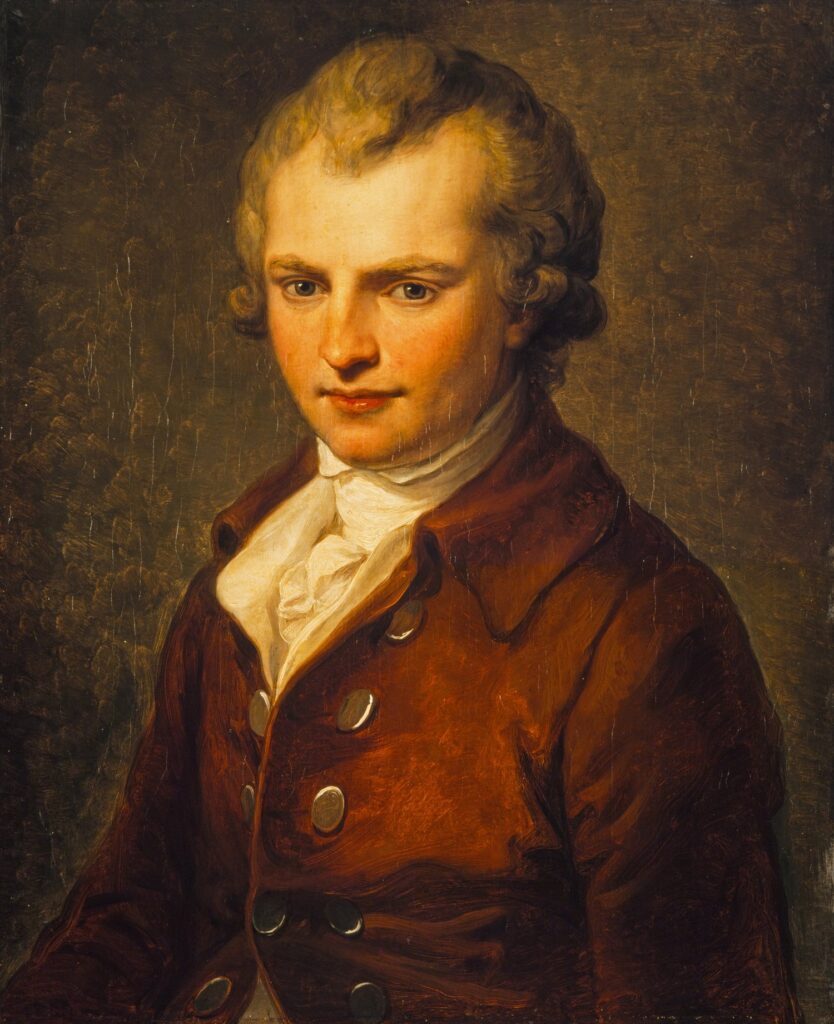
(National Galleries of Scotland. Licence: Creative Commons CC by NC)
One of Scotland’s pioneering geologists, James founded the field of experimental geology. Born at the family estate of Dunglass, East Lothian, to Sir John Hall and Magdalen (Pringle), he studied at Cambridge, Edinburgh, and Brienne in France (alongside Napoleon Bonaparte). While studying in Edinburgh he attended classes taught by Joseph Black and John Walker.
Towards the end of the C18, many theories regarding the origins of Earth’s rocks circulated among the scientific community, one of which focussed on igneous rocks. One school of thought believed they had been deposited in primeval oceans (Neptunists), while another thought the process involved the intense heat and pressure of volcanic activity (Plutonists).
James was initially of the Neptunist persuasion but after spending time with James Hutton (a Plutonist) he set out to help prove Hutton’s theories by designing and building a furnace in which he heated basalt and limestone, and showed that basalt returned to its original structure, while limestone cooled into marble. He went on to demonstrate through various experiments, the extent of the effects of volcanic activity and pressure upon rock formation.
After succeeding to the Dunglass baronetcy aged 15, James was M.P. for St Michael’s in Cornwall in 1807 & 1812, and President of The Royal Society of Edinburgh.
James Hall’s wife, Lady Helen Hall is the subject of a 2013 biography by Sally Wilson Lady Helen Hall, Lang-heidit Lady, which details her life and achievements at a time in which women were rarely recognised for roles outside marriage and child-bearing.
10: Nikolaus I, Prince Esterházy (1714-1790)
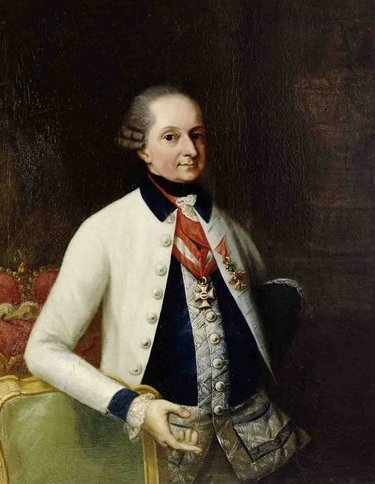
Nikolaus was born in 1714 to József Simon Antal and Mária Józsefa Eleonora Esterházy de Galántha, Hungarian nobility, the most prominent landowners of the time and historically loyal to the Habsburg rulers.
He succeeded to the title of Prince in 1762 on the death of his brother Prince Paul Anton.
He enjoyed a distinguished military career in which he served the Austrian Empire, achieving the rank of Lieutenant Field-Marshal, he went on to join Maria Theresa’s bodyguard as Captain before being appointed Field Marshal in 1768.
After succeeding to the title of Prince, Nikolaus built a magnificent palace, Eszterháza at Fertőd in the Baroque style, which is referred to as the ‘Hungarian Versailles’. The household was ran with military efficiency , although the Prince had extravagant tastes – he was famed for owning a diamond studded jacket.
His greatest passion was music, and took his role as Joseph Haydn’s patron very seriously. He also played various instruments, including the baryton, and was particularly fond of opera.
Nikolaus married Freiin Marie Elisabeth in 1737, who gave birth to their son, Anton I, Prince Esterházy in 1738.
11: Oliver Cromwell, Lord Protector (1599-1658)
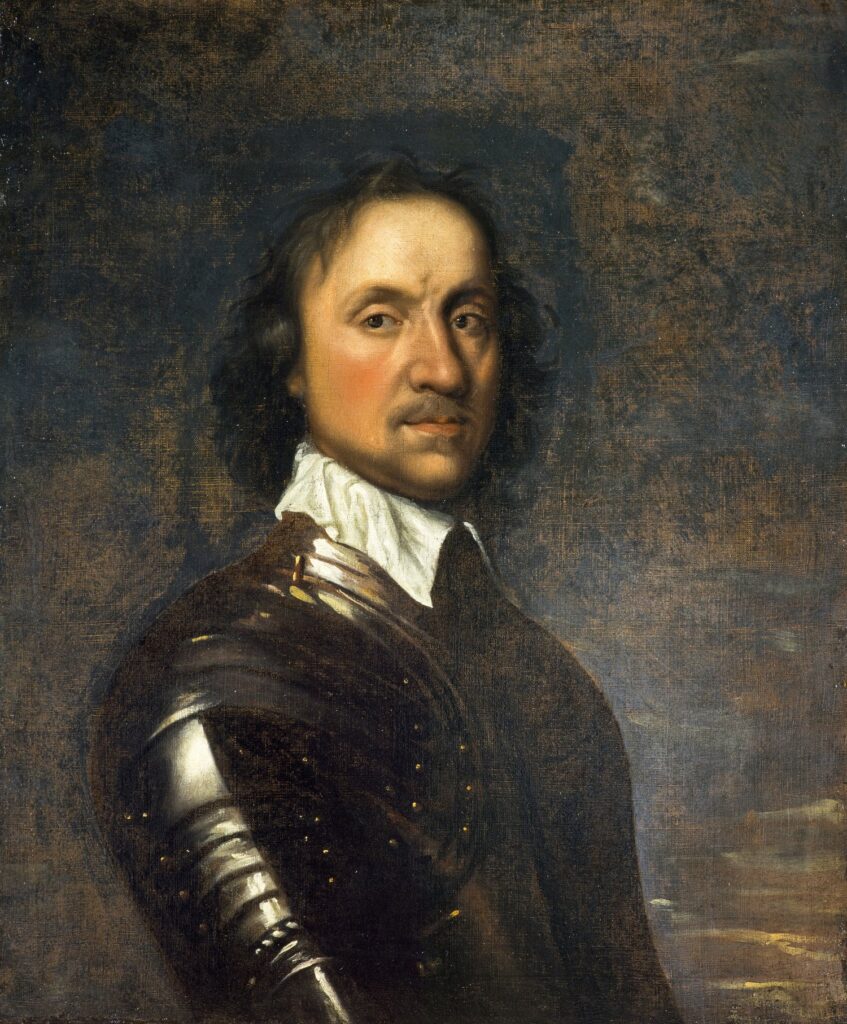
Oliver Cromwell was born at Huntingdon, on 25th April 1599, to Robert Cromwell and his second wife Elizabeth Steward. Some time after studying at Sidney Sussex College, Cambridge, he experienced a religious conversion to Puritanism.
This religious movement was rapidly gaining ground at the time, and Cromwell’s career as Member of Parliament for Huntingdon and Cambridge would have given him the opportunity to meet influential Puritan politicians. Cromwell’s faith would be a driving force throughout his life, particularly during the English Civil War. The ramifications are being felt to this day, particularly in Ireland – Cromwell’s conquest of the country resulted in the deaths of at least 5,000 soldiers and civilians, alongside wide scale confiscation of Irish land.
Despite very little military training, he shared command of the New Model Army until 1648 with defeat of the Royalist forces. As a leading member of the Rump Parliament, Cromwell signed the death warrant of Charles I, becoming Lord Protector in 1653 until his death in 1658. By the end of the Protectorate Cromwell had dismissed his parliaments and chose to govern the country virtually as a military dictatorship through his major-generals.
His marriage to Elizabeth Bourchier in 1620 produced nine children, six of whom survived.
12: Robert Cadell (1788-1849)
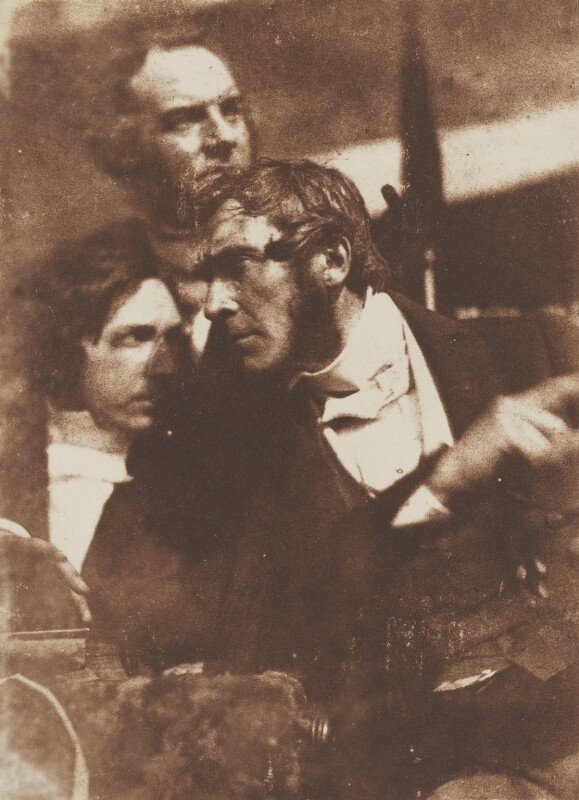
Robert Cadell was born at Cockenzie House, Prestonpans, the son of John Cadell Esquire of Cockenzie and Mrs Mary Buchan. In 1807 he joined the publishing house of Archibald Constable & Co. of Edinburgh, becoming a partner in 1811 and sole partner with Constable in 1812.
In 1817 he married Elizabeth Constable, the daughter of his business partner, and her death a year later began a period of disagreement between the two which lasted until the company’s bankruptcy in 1826.
Archibald Constable & Co. had been Sir Walter Scott’s publisher up until the bankruptcy, and Scott decided to stay with Cadell, who was more cautious in his business dealings than Constable. Cadell would become Scott’s sole publisher at this point, helping to revive the novelist’s fortunes.
Robert Cadell remained in the publishing business until his death in 1849. He married again in 1821 to Anne Fletcher Mylne with whom he had ten children.
13: William Henry Cavendish-Bentinck, 3rd Duke of Portland (1738-1809)
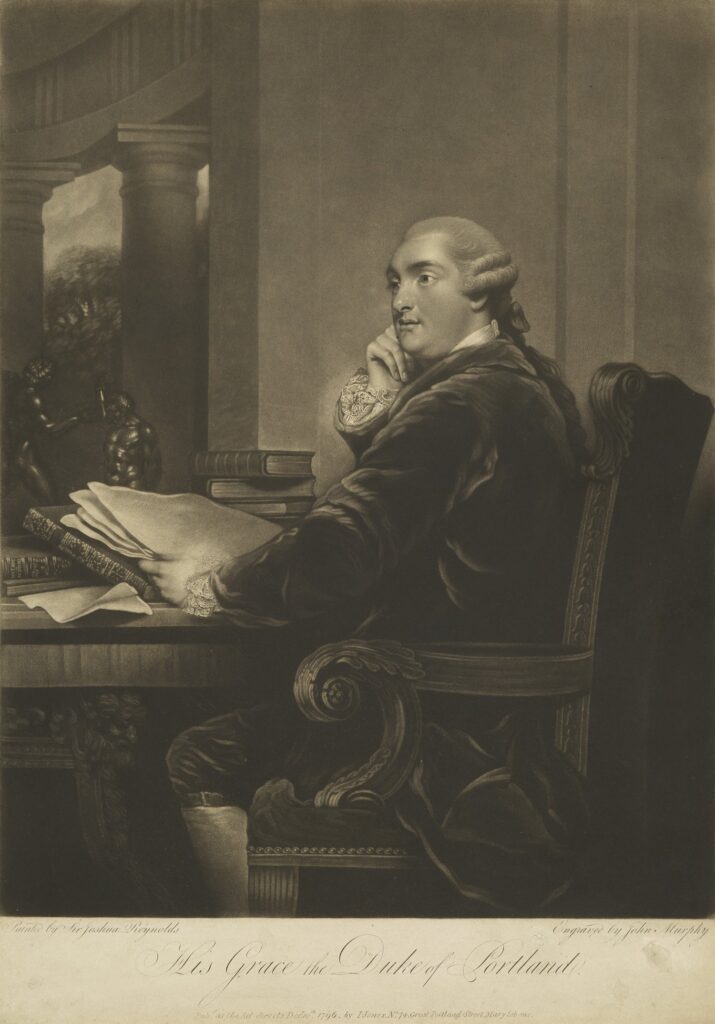
William was born in Nottinghamshire to William Bentinck, 2nd Duke of Portland and Margaret Cavendish-Harley. Educated at Westminster School, London and Oxford University, afterwards embarking on a Grand Tour of Germany, Poland and Italy from 1757-1761.
Elected MP for Weobly in 1761, succeeding to the dukedom in 1762, William was made Lord Chamberlain in Rockingham‘s first ministry of 1765-6, and served as Lord Lieutenant of Ireland in Rockingham’s second ministry.
In 1789, Portland became one of several vice presidents of London‘s Foundling Hospital, and From 1792 -1809 he served as Chancellor of the University of Oxford.
Twice serving as Prime Minister, first in 1783 as part of a coalition government, and then in 1807, resigning the post in 1809 due to ill health.
William married Lady Dorothy Cavendish in 1766, having six children. Two London streets were named in his honour and he left a a collection of fine art ‘The Portland Collection’, which includes two paintings by George Stubbs.
14: Sir James Milles Riddell of Ardnamuchan and Sunart (1787-1861)
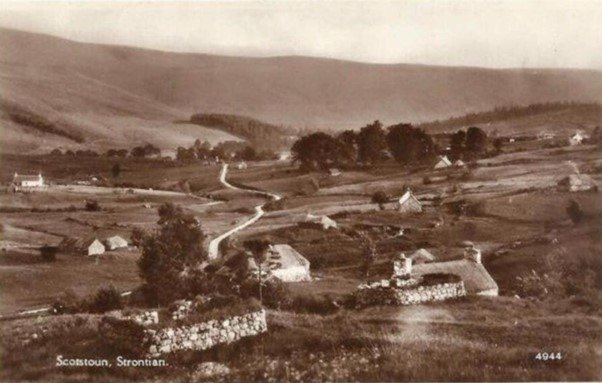
Sir James Riddell was born in Strontian, Argyllshire, to Thomas Riddell, and Margaretta Campbell, succeeding to the baronetcy of Ardnamuchan and Sunart in 1797 on the death of his grandfather. After studying at Christ Church, Oxford, he was elected a fellow of the Royal Society of Edinburgh in 1821.
James’s grandfather, Sir James Riddell, 1st Baronet of Ardnamurchan had purchased the estate of Ardnamurchan and Sunart in 1767. The estate passed to James, along with the baronetcy and from the first decade of the new century he would take a practical role in the running and management. Detailed surveys, maps, and valuations were commissioned at this time, with recommendations for improvements in the efficiency of the land’s production.
Whether the estate was in financial difficulty isn’t clear, but in the early C19 agricultural improvement was in full effect in the Highlands, and the largest landowners were removing tenants from the land to make space for livestock.
An account of 1892 describes James Riddell’s part in the Clearances of one the villages on his estate – “….attended with many acts of heartless cruelty on the part of the laird’s representatives. In one case a half-witted woman who flatly refused to flit, was locked up in her cottage, the door being barricaded on the outside by mason-work. She was visited every morning to see if she had arrived at a tractable frame of mind, but for days she held out. It was not until her slender store of food was exhausted that she ceased to argue with the inevitable and decided to capitulate.”
Another observer recorded that, “To clear Bourblaige, the laird’s men shot the dogs, and they shot the goats, and they drove away the cows. And then they took the roofs off. It was in the wintertime that they did it. Ploughs were put through the potato pits so that they would spoil in the frost. And the people walked to Swordle [on the north coast] through showers of snow.”
Parts of the estate have now been designated as scheduled monuments by Historic Environment Scotland – “The monument is of national importance for its potential contribution to an understanding of the way of life and the architecture of post-Medieval communities in this area of Scotland. Many of the buildings are well preserved and contain complex architectural information.”
Sir James married Mary Brooke in 1822, having four children, including Sir Thomas Riddell 3rd baronet .
15: Reverend Doctor William Thomson aka “Thomas Newte” (1746-1817)
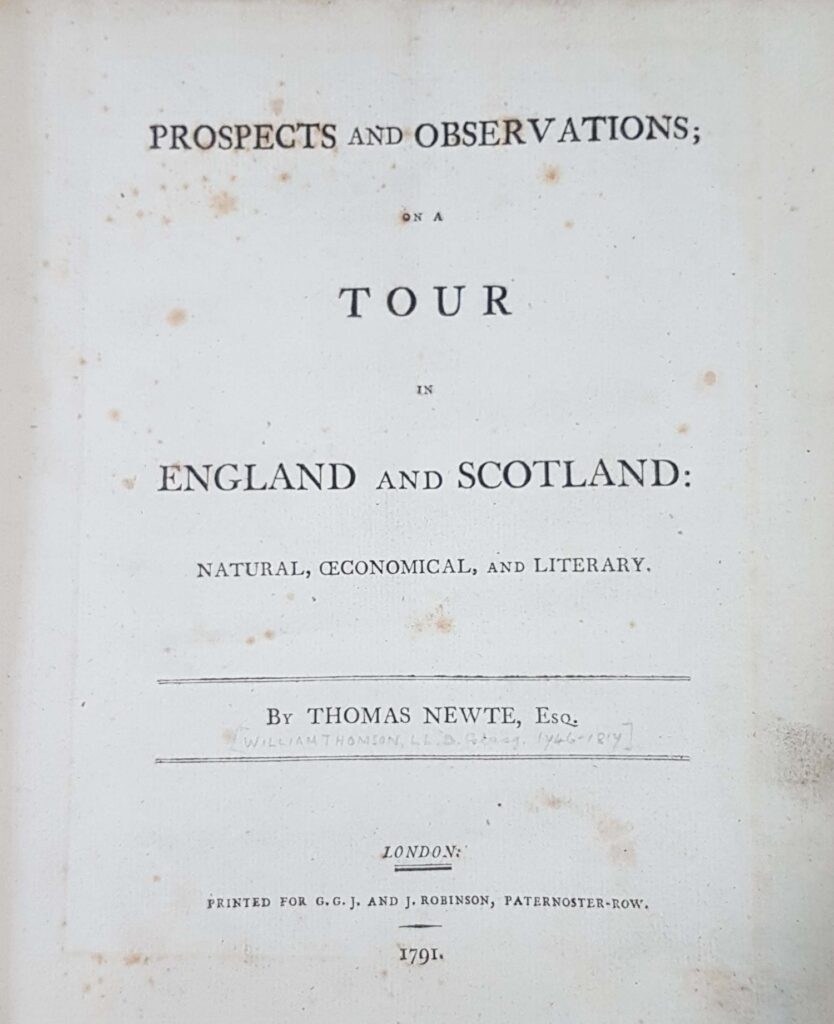
William Thomson was born at Burnside (Forteviot) to Matthew Thomson, a carpenter and builder, and the daughter of a neighbouring schoolmaster, surname Miller. He was educated at the grammar school in Perth before entering St Andrews University to study theology, later attending Edinburgh University. While at University he became employed as private librarian at Dupplin Castle to the Earl of Kinnoull (chancellor of the university). He was later ordained and was made assistant to the minister of Monivaird. He was quite unsuited to life as a clergyman, his behaviour being such that he “was obliged by the complaints of his parishioners to resign”.
He was supported by the Earl of Kinnoull when he moved to London to pursue a literary career. He wrote prolifically, particularly on voyages and travel, which was a very popular genre at the time. Many of his travel books were written under pseudonyms, often inspired by high ranking military/naval personnel, the best known being “Thomas Newte”. Thomas Newte was a Captain in the East India Company, but it isn’t known whether or not he was aware of William Thomson.
William was notably the writer of a piece of early science fiction – ‘The Man in the Moon, or Travels into the Lunar Regions, by the Man of the People’, a satirical/allegorical story in which the Man in the Moon descends to earth and whisks the radical politician Charles Fox back to the moon. The moon was a popular setting for writers of the time – a place suitably removed from Europe in which creative narratives could be played out.
He married twice, first to to Diana Miltone, and later to Anna (Thomson), with children by both wives.
16: Edinburgh and Leith (and the Secretary of the Post Office)
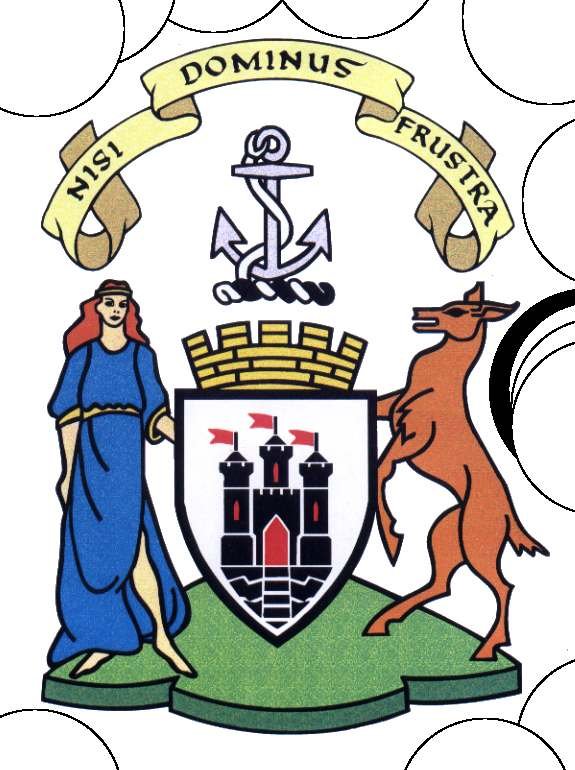
Town seals have been in use in Western Europe since the late C12, Each council using a seal bearing the town’s coat of arms in order to authenticate official letters and documents. The use of the seal would be under the control of the Town Clerk. The design would be updated with changes in material technology and the heraldry used to represent each town.
This seal is decorated with arms most likely dating from 1732, the year in which the coat of arms was formally granted by the Lord Lyon King of Arms.
The castle in the coat of arms represents Edinburgh Castle, with an anchor above for the Lord Provost, who is also Admiral of the Firth of Forth. The woman to the left symbolises the ‘Castle of the Maidens’, as Edinburgh Castle was known until the C16, while the doe represents St Giles, patron saint of Edinburgh.
The motto is ‘Nisi Dominus Frustra’, meaning ‘Except the Lord in vain’, a shortened version of a line from Psalm 127: “Except the Lord build the house, they labour in vain that build it: except the Lord keep the city, the watchman waketh but in vain”.

The seal in this instance is a copy of the Seal of Leith, which dates from 1563 at a moment when Mary Queen of Scots was supporting the port’s ambition to become an independent Burgh. Leith was historically a separate town, its earliest mention being in the twelfth century, and only merging with Edinburgh on 1st November 1920.
The arms feature a ship holding the Virgin Mary and infant Jesus, masts with flags at each end, on the sea, with a covering/small cloud above their heads. The motto is ‘Persevere’.
There is debate as to whether the woman in the boat represents Mary Magdalene, who has a stronger connection to the sea and Europe than the virgin Mary. However, South Leith Church was originally a Chapel dedicated to St Mary and the ship motif may be purely a reference to Leith as a port.
These arms have appeared on the Leith flag since at least the twelfth century, but after the amalgamation of Leith with Edinburgh, the rights to the arms fell into disuse and returned to the Crown. After the successful campaign of a local businessman, the rights were returned to Leith and are now the property of the Leith Neighbourhood Partnership.
The Seal of the Secretary of the Post Office
During the period in which the Riddells were collecting, the post of Secretary to the Post Office would have been held by Sir Francis Freeling, 1st Baronet (25 August 1764 – 10 July 1836).
Freeling was born at Redcliffe Hall near Bristol in1764. He began his career in the Post Office in 1784, where he witnessed the successful trial John Palmer’s scheme for a mail coach service. Being promoted in 1785 to assist Palmer, he went on to become permanent head of the Post Office in 1798, until his death in 1836. In this role he oversaw many reforms to the organisation, such as the growth of the Penny Post and the use of rail transport rather than road.
During his spare time, Freeling built an impressive library, was elected a Fellow of the Society of Antiquaries of London in 1801 and was one of the original members of the Roxburghe Club.
Freeling was also part of a group of government officials opposed to the radical movements of the time, being well placed to monitor postal communications. He contributed to the founding of the the Sun evening newspaper in 1792 (no relation to the modern tabloid).
17: Sir William Hamilton of Preston (1788-1856)
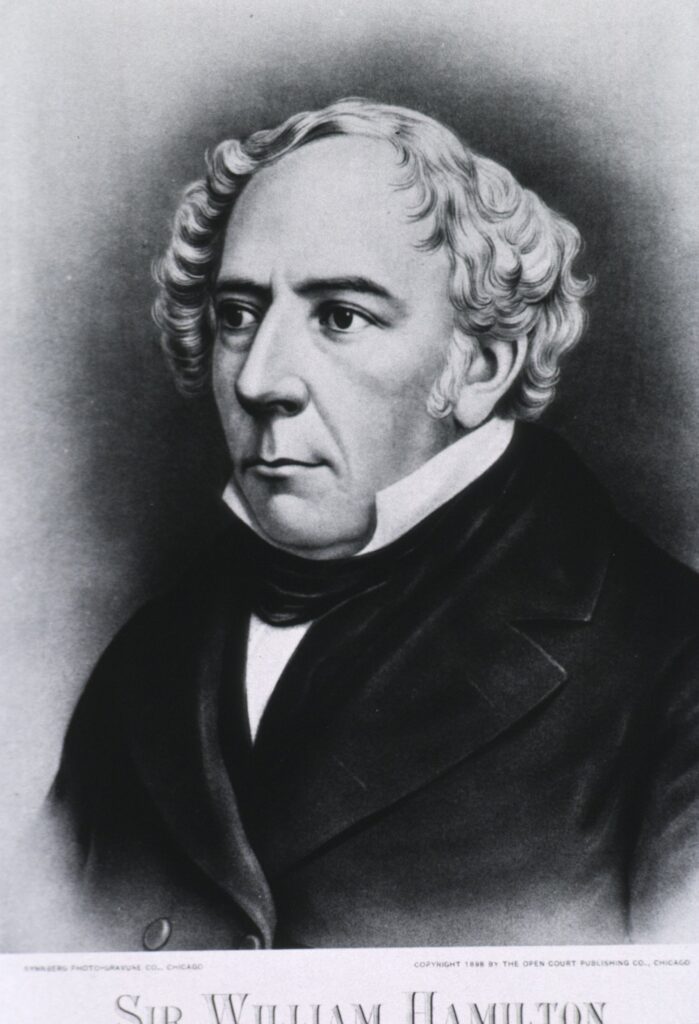
Sir William Hamilton was born in Glasgow to William Hamilton (Regius Professor of Anatomy and Botany at the University of Glasgow) and Elizabeth Stirling. He was educated in England and Scotland before beginning his studies in philosophy at the University of Glasgow in 1803. He went on to study at Oxford and Edinburgh, adding law and medicine to his achievements in philosophy, and by 1836 was appointed Chair of Logic and Metaphysics at Edinburgh.
In 1817 and 1820 Hamilton travelled to Germany where he studied the writings of Kant and his associated philosophical movement. This would heavily influence his work from then on, particularly the teaching for which he is best known.
He is widely acknowledged to have made a significant contribution to Scottish philosophy at a time in which the field was proliferating.
He married Janet Marshall in 1828, with four children, including Elizabeth Hamilton, best known for her contribution to Encyclopaedia Britannica.
18: Empress Maria Theresa of Germany (1717 – 1780)
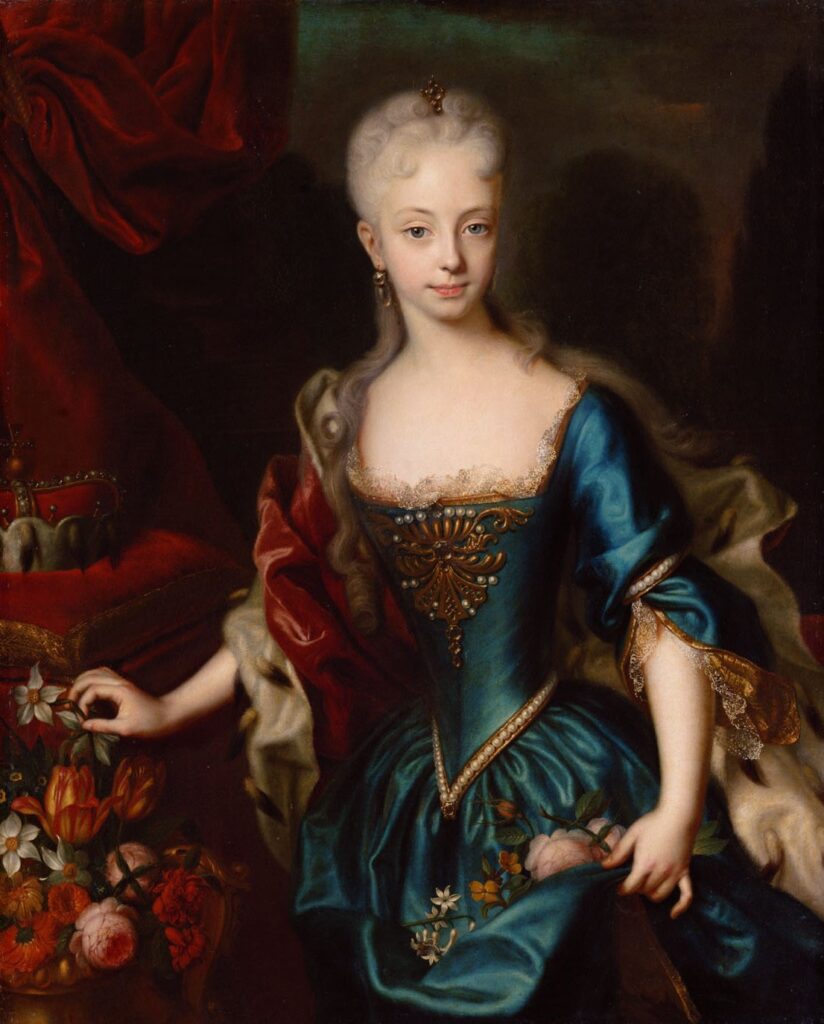
Maria Theresa was born in Vienna to Emperor Charles VI, and Elisabeth Christine of Brunswick-Wolfenbüttel, the first of three daughters. At the age of 23 she became Archduchess of Austria, ruling Austria ,Hungary and Bohemia alongside her husband, Francis I. She was the only female sovereign of the House of Habsburg during the time immediately preceding the Enlightenment when European rulers were increasingly valuing rationalism and supporting human rights.
Immediately after her accession the country was plunged into the War of the Austrian Succession and the Seven Years’ War, leaving Austria impoverished.
Maria introduced military and educational reforms, and made many civic improvements in Vienna. Religiously and morally intolerant to the extent of expelling 20,000 Jews from the empire, she also introduced a Chastity Court, whose punishments included the death sentence.
A long and happy marriage resulted in the birth of 16 children, the eldest of which, Joseph II, Holy Roman Emperor, succeeded to the throne.
19: Andrew Agnew of Lochnaw (1793-1849)
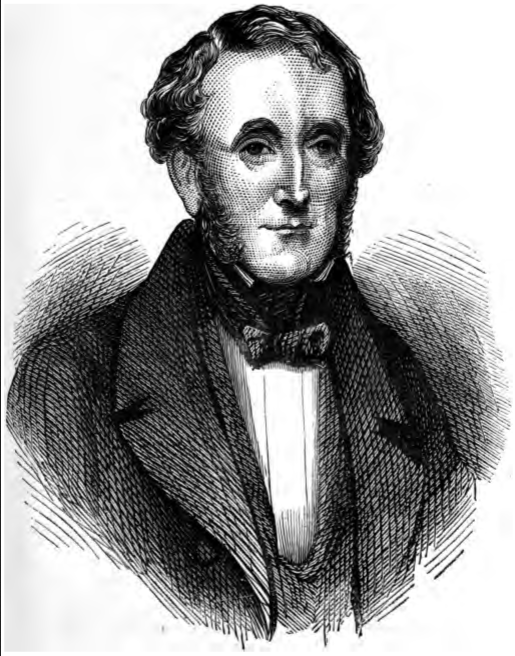
Andrew Agnew was born in Kinsale, County Cork to Andrew Agnew and Martha, daughter of John de Courcy, 19th Lord Kingsale. He attended the University of Edinburgh and the University of Oxford before succeeding his grandfather as 7th Baronet in 1809.
He was M.P. for Wigtownshire twice, and spent the majority of his parliamentary career campaigning for sabbath observance. As a Sabbatarian he petitioned Parliament regularly with a bill which would prohibit all forms of secular labour on Sunday. The bill was voted down four times before being withdrawn completely. On its fourth attempt, it was challenged by Charles Dickens as being discriminatory towards the poor and working class.
The bill, as well as prohibiting labour, also made all forms of secular leisure activities illegal – visiting parks, galleries, tea rooms, trips on paddle steamers. After the reading of the fourth version of the bill, Dickens wrote and published a pamphlet entitled ‘Sunday Under Three Heads’ in which he imagined its effects on the population. He concluded that ‘The Sabbath was made for man, and not man to serve the Sabbath.’
Andrew married Madeline Carnegie in 1816, with a family of twelve children by 1835.
20: Nathan Mayer Rothschild (Baron de Rothschild) (1777-1836)
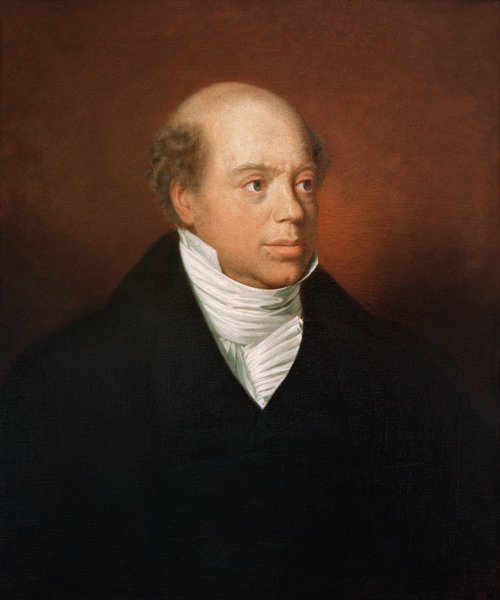
Born in the Frankfurt Ghetto, part of the Free City of Frankfurt to Mayer Amschel Rothschild and Gutle Schnapper, he moved to Manchester, England in 1798, where he established a business in textile trading and finance. After moving to London he continued to expand his business becoming a freemason in 1802. From 1809 he began investing and dealing in gold bullion, and in 1811 at the outset of the Napoleonic Wars he made investments to support British troops. He was not the first person to bring news of the results of the battle of Waterloo to London however.
In 1824 he founded founded the Alliance Assurance Company, which later merged with Sun Insurance to form Sun Alliance. By 1826 his bank was successful enough to supply sufficient coin to the Bank of England to avoid a liquidity crisis. Before his death in 1836, he had signed a contract with the Spanish Governmment for mining rights which gave Britain a European mercury monopoly.
After the Slavery Abolition Act of 1833, Nathan loaned the British Government £15 million (£1.46 billion in 2022) in order to compensate slave owners in the British Empire. He was both a claimant and a beneficiary under the scheme.
He married Hannah Barent-Cohen in 1806 and the couple went on to have seven children.
The arms on his seal represent the Five Arrows, a device which Nathan created in 1818 and originates with a Persian tale told by his father in which five arrows held in a bundle are far stronger than a single one.
21: George Augustus Chichester, 2nd Marquess of Donegal (1769-1844)
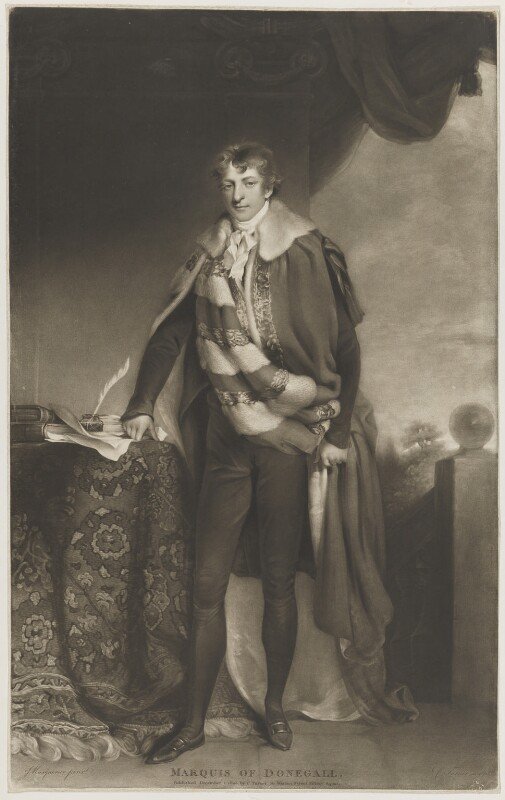
Born at St James’s, Westminster to Arthur Chichester, 1st Marquess of Donegall and Lady Anne Hamilton, George served as representative in the Irish House of Commons for Carrickfergus, County Antrim, before succeeding his father as second Marquess of Donegall in 1799. Admitted to the Irish Privy Council in 1803, he later served as Lord Lieutenant for County Donegal. In 1821 he was made a Knight of the Order of St Patrick when George IV visited Ireland.
George had inherited vast estates along with his title and developed a love of gambling. His father paid his debts several times before allowing him to be sent to the debtors prison.
While inside, he was offered payment by a lawyer named May to secure his release in return for marrying his daughter Anna (August 1795). The couple fled to Belfast where they raised seven sons, the eldest of whom was engaged to marry a daughter of the earl of Shaftesbury in 1819.
An anonymous letter was sent to the Marquess to inform him that his marriage to Anna May had been performed illegally and that all their children were therefore illegitimate. A retrospective change in the law was achieved, with the agreement that the Marquess would pay off the entirety of his debts. The subsequent sale of a huge proportion of Donegal’s estates had the effect of weakening the power of the aristocracy in Ireland.
22: Burgess ticket of William Macleod, Bannatyne of Kames, Lord Bannatyne (1743-1833)
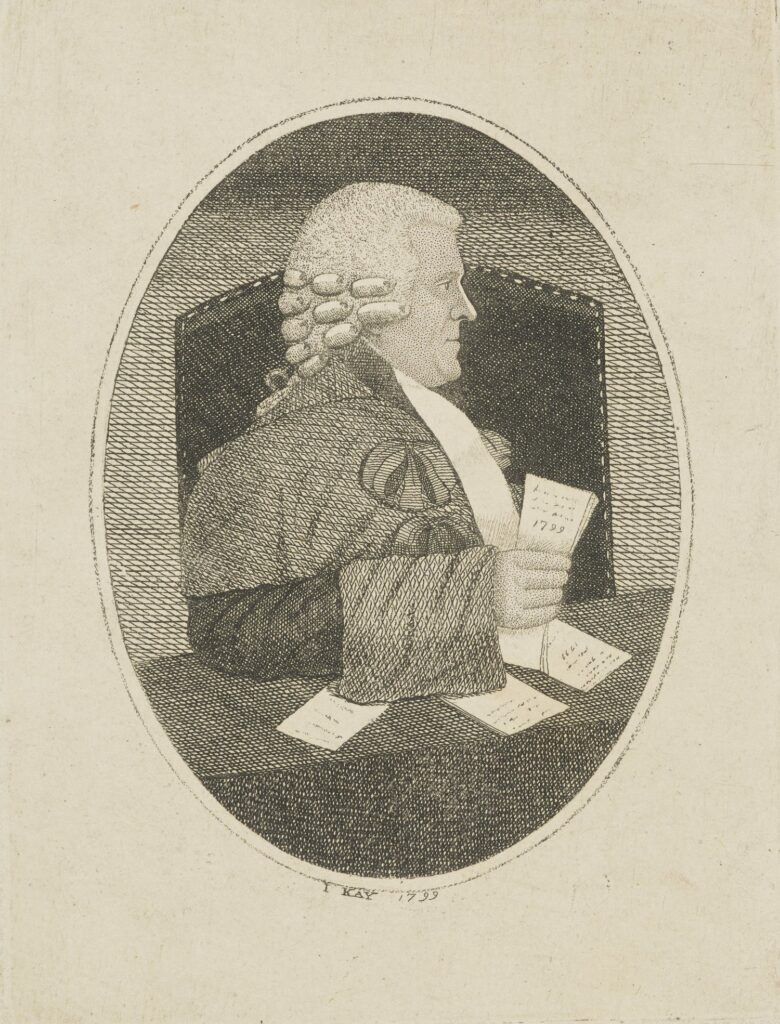
Born in Kilmadock, Perthshire to Roderick Macleod of Sunbank W.S. and Isabel Bannatyne, daughter of Hector Bannatyne of Kames, William attended the High School of Edinburgh (1755-6), and was admitted Advocate, 22 January 1765.
He became Sheriff of Bute in 1776. On the death of his maternal uncle, James Bannatyne, he inherited Kames Castle on Bute, along with its estate. He continued the work of his uncle, improving the islands infrastructure and taking a good interest in the welfare of his tenants. Unfortunately his extravagance led him into debt and the estate was sold shortly after 1806.
He spent the rest of his life in Edinburgh at a house in the Cannongate where he built a valuable collection of antiquarian books. His close friends included Blair, Mackenzie, Cullen, Erskine, Abercromby, and Craig. He was a contributor to the Mirror and Lounger publications, and a founding member of the Bannatyne Club and the Highland Society
His aunt, Lady Clanranald, was imprisoned in the Tower of London, for having afforded protection to Prince Charles during his wanderings, after the battle of Culloden.
The Town Clerk of Rothesay, John Blain who oversaw the signing of this Burgess ticket was an acquaintance of Lord Bannatyne and his diary can be seen here.
23: Professor Thomas Charles Hope (1766-1844)
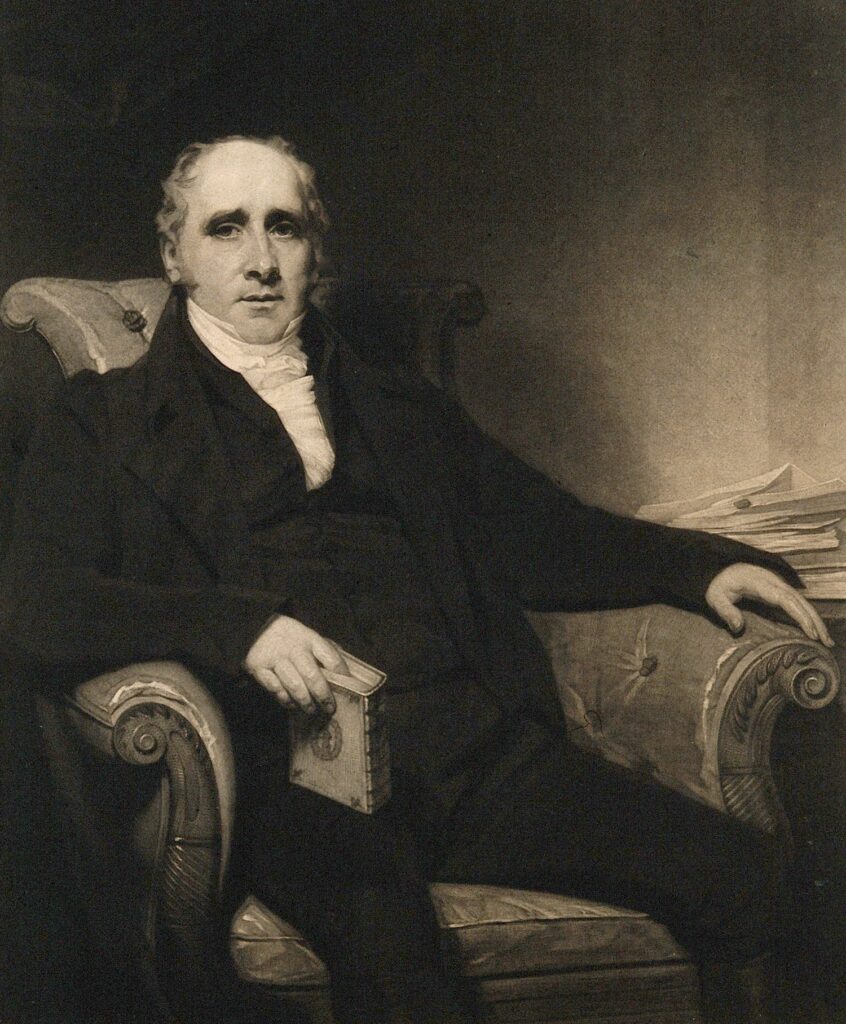
Born in Edinburgh to John Hope and Juliana Hope (nee Stevenson) who was the daughter of an Edinburgh physician. Thomas studied at Edinburgh High School and Dumfries before attending the University of Edinburgh. His father had had a very successful career as King’s Botanist, Fourth Regius Keeper of the Royal Botanic Garden, and Professor of Medicine and Botany at Edinburgh University. Thomas wished to succeed his father as Chair of Botany, and spent many additional years in study. He was not successful in this appointment and instead was appointed Lecturer in Chemistry in the University of Glasgow, later becoming Professor of Medicine in 1791.
In 1787, Hope became the first University lecturer to teach his students about the ideas of Antoine Lavoisier, dismissing the phlogiston theory. The phlogiston theory asserted that when inflammable material burns, an ‘element’ named phlogiston is released. He later experimented with strontium carbonate, paving the way for the discover of the element strontium, and discovered the temperature at which water reaches its greatest density (39 – 40 °F).
He was an inspirational teacher, one of the first to give practical classes, he put a great deal of effort into his lectures – a young Darwin remarked that his lectures during his first year “were intolerably dull, with the exception of those on chemistry by Hope…”
In 1826 he gave lectures to the public at which women were admitted. Lord Cockburn wrote at the time – “The fashionable place here now is the College; where Dr Thomas Charles Hope lectures to ladies on Chemistry. He receives 300 of them by a back window, which he has converted into a door… I wish some of his experiments would blow him up. Each female student would get a bit of him”.
Dr Hope’s seal is green, which may indicate that the letter was for friendly/casual correspondence, but is an unusual colour, the only one of its kind in the collection – this may indicate that the owner had a flamboyant public identity, and certainly fits with descriptions of the time.
